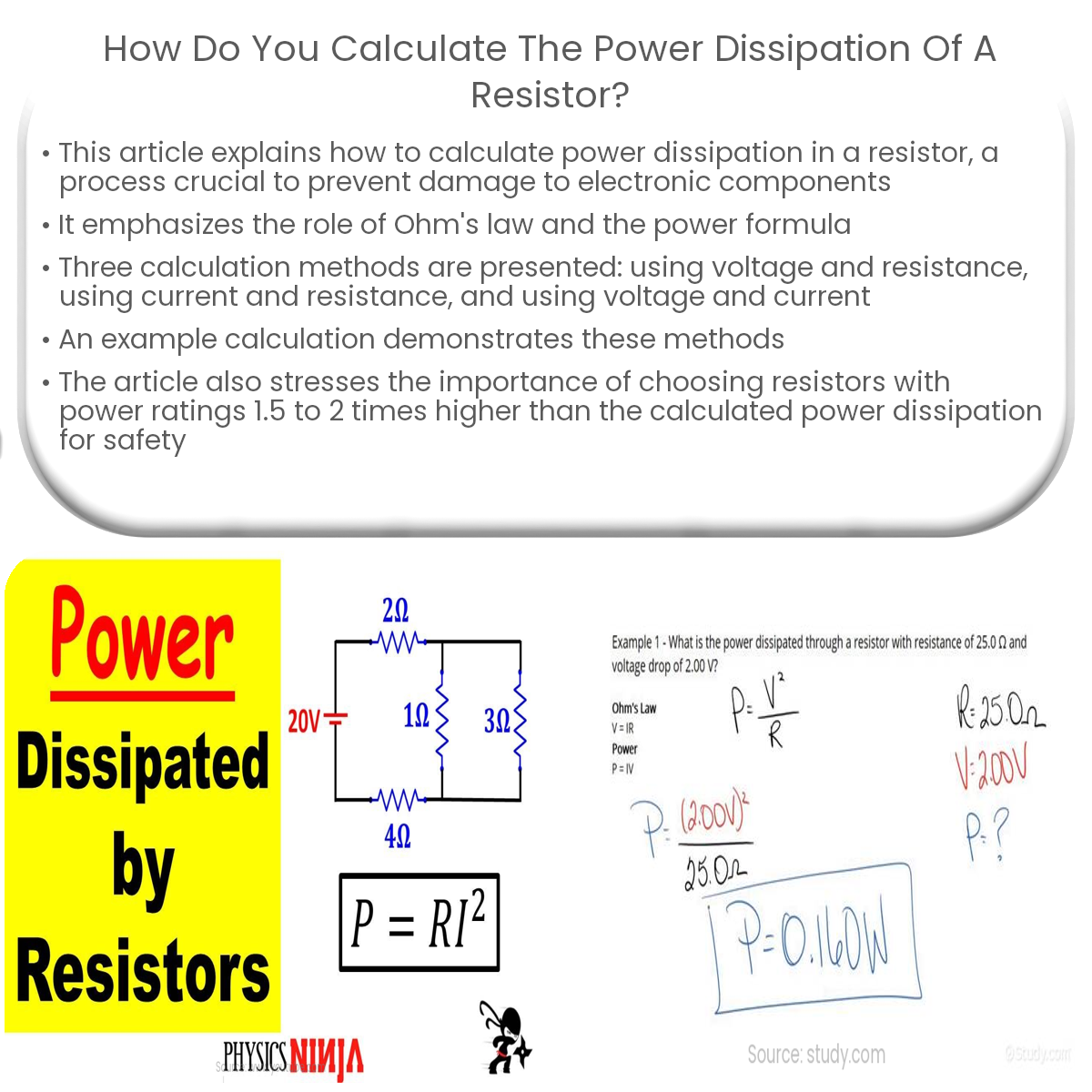To calculate power dissipation in a resistor, use P=V^2/R, P=I^2R, or P=VI, depending on the available values for voltage, current, and resistance.
Calculating Power Dissipation of a Resistor
Power dissipation in a resistor is the process of converting electrical energy into heat energy, and it is essential to understand how to calculate it to avoid damaging components. In this article, we’ll explore the methods used to determine power dissipation in a resistor.
Ohm’s Law and Power Formula
Calculating power dissipation starts with understanding Ohm’s law and the power formula. Ohm’s law states that the voltage (V) across a resistor is directly proportional to the current (I) flowing through it, with resistance (R) as the proportionality constant. Mathematically, it’s expressed as:
V = I * R
The power formula relates the power (P) dissipated in a resistor to the voltage and current:
P = V * I
Three Methods for Calculating Power Dissipation
- Using voltage and resistance: Combine Ohm’s law and the power formula to find the power dissipation using voltage and resistance:
- Using current and resistance: Similarly, we can use current and resistance to determine power dissipation:
- Using voltage and current: If both voltage and current values are known, simply multiply them to find power dissipation:
P = V2 / R
P = I2 * R
P = V * I
Example Calculation
Suppose we have a 100-ohm resistor with a voltage of 5 volts across it. Using the first method:
P = V2 / R = (5V)2 / 100Ω = 25V2 / 100Ω = 0.25W
The power dissipation in the resistor is 0.25 watts.
Importance of Power Rating
When designing circuits, it’s crucial to select resistors with power ratings higher than the calculated power dissipation to avoid damage or failure. A general rule is to choose a resistor with a power rating at least 1.5 to 2 times the calculated value for a safety margin.
By understanding how to calculate power dissipation in a resistor, you can ensure the reliability and longevity of your electronic circuits.


